Safe driving preparation Learning the art of safe driving in adverse weather requires preparation and training. Start with a vehicle that’s ready for the rigors of the rainy season: good tire tread…
Safe Driving Preparation
Learning the art of safe driving in adverse weather requires preparation and training. Start with a vehicle that’s ready for the rigors of the rainy season: good tire tread, firm brakes, and streak-free wipers. Add wet weather safe driving techniques: dealing with reduced visibility and traction, steering, braking, and skid control. When vehicles and drivers are ready, practice in a safe, secluded area. The driver who knows what to do in an emergency is more likely to stay in control.
Safe Driving In Wet Weather
Emergencies by definition happen suddenly with little time for evaluation and decision-making. You have to be prepared to act quickly to avoid a crash. A review of nearly 12,000 collisions found that more than 37 percent of drivers involved took no action to prevent or avoid the incident.
Think Caution
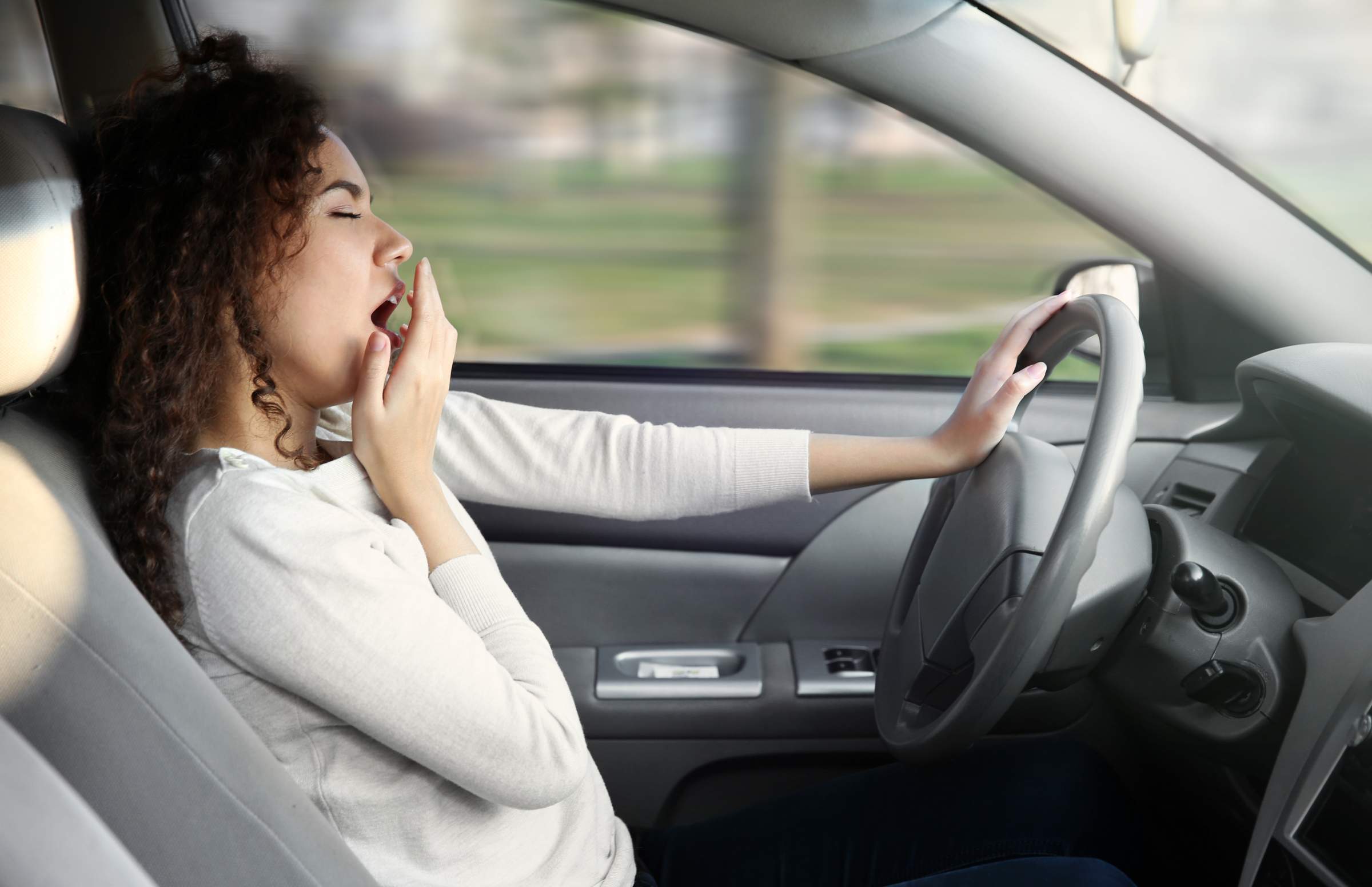 Get in the right frame of mind before you get behind the wheel. Never drive when you’re emotionally upset or rushed. According to traffic safety authorities, lack of attention is a major contributing factor to auto crashes. Additionally, your alertness level normally drops around your regular bedtime. Nightfall only magnifies your risk by limiting your field of visibility. If you must drive during your regular sleep cycle, stop each hour and freshen up. A best practice is to travel with another person so that the responsibility of driving can be shared to ensure a rested driver is behind the wheel.
Get in the right frame of mind before you get behind the wheel. Never drive when you’re emotionally upset or rushed. According to traffic safety authorities, lack of attention is a major contributing factor to auto crashes. Additionally, your alertness level normally drops around your regular bedtime. Nightfall only magnifies your risk by limiting your field of visibility. If you must drive during your regular sleep cycle, stop each hour and freshen up. A best practice is to travel with another person so that the responsibility of driving can be shared to ensure a rested driver is behind the wheel.
Pre-Season Checkup
Rain, slush and mud are hard on your vehicle. Be prepared for the rainy season by conducting a thorough checkup.
- Battery
- Lights
- Brake System
- Tires
- Windshield Wipers and Washer Fluid
- Emergency Kit
Battery
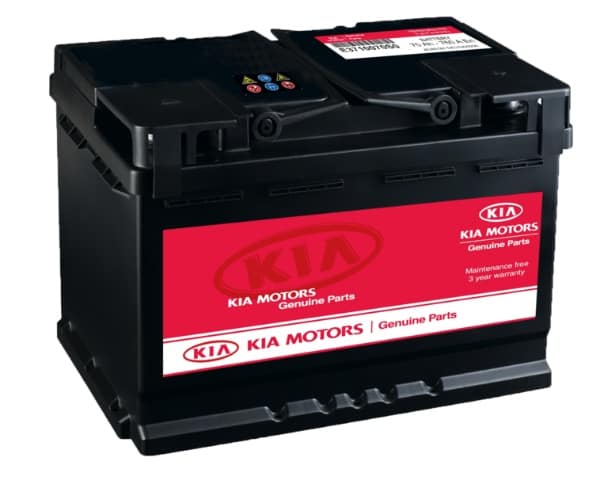 Wet weather places heavy demands on the battery and charging system. Recharge or replace weak batteries. Check fluid levels, battery posts, and charging systems.
Wet weather places heavy demands on the battery and charging system. Recharge or replace weak batteries. Check fluid levels, battery posts, and charging systems.
The Car Lighting Systems Check
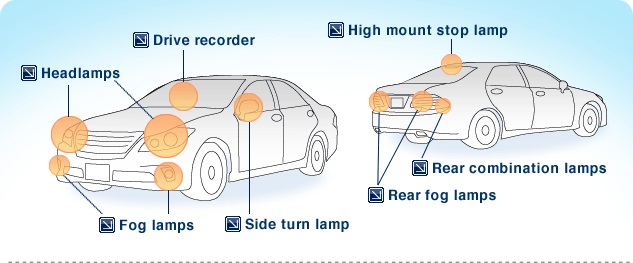 Check the headlights, side-marker lights, emergency flashers, parking lights, front and rear directional signals, taillights, and brake lights. Make sure they work and are clean — a quick wipe can make a big difference.
Check the headlights, side-marker lights, emergency flashers, parking lights, front and rear directional signals, taillights, and brake lights. Make sure they work and are clean — a quick wipe can make a big difference.
Brake System
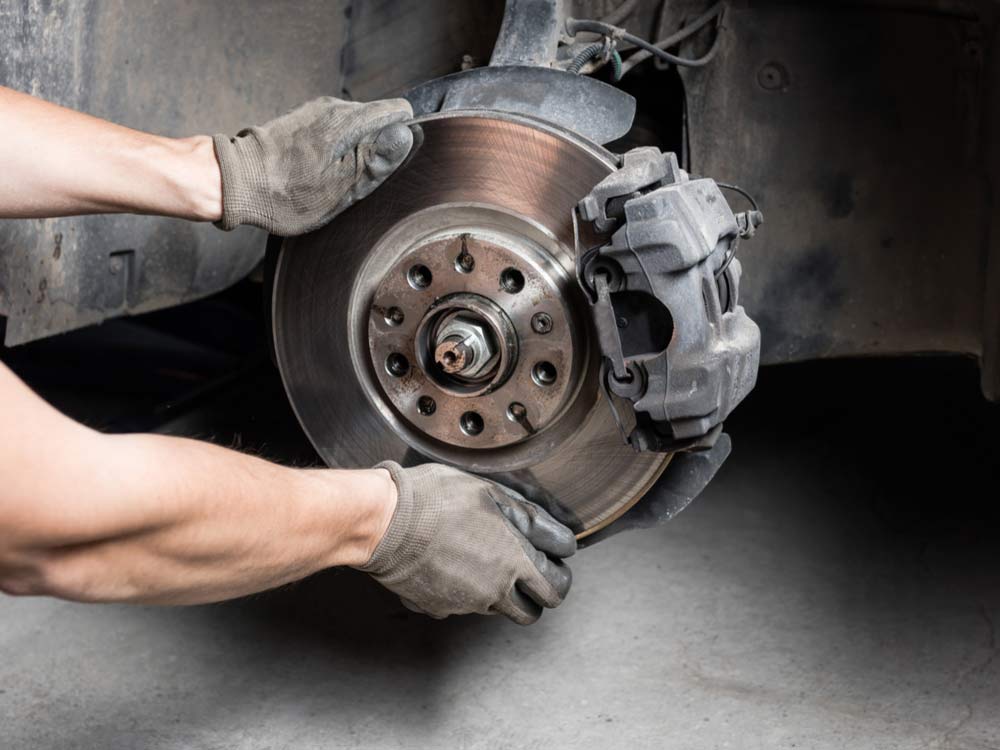 Check brakes for proper operation. Pulling to one side, a taut pedal or unusual squealing or grinding could indicate the need for brake repair. Don’t delay!
Check brakes for proper operation. Pulling to one side, a taut pedal or unusual squealing or grinding could indicate the need for brake repair. Don’t delay!
Tires To Increase Traction
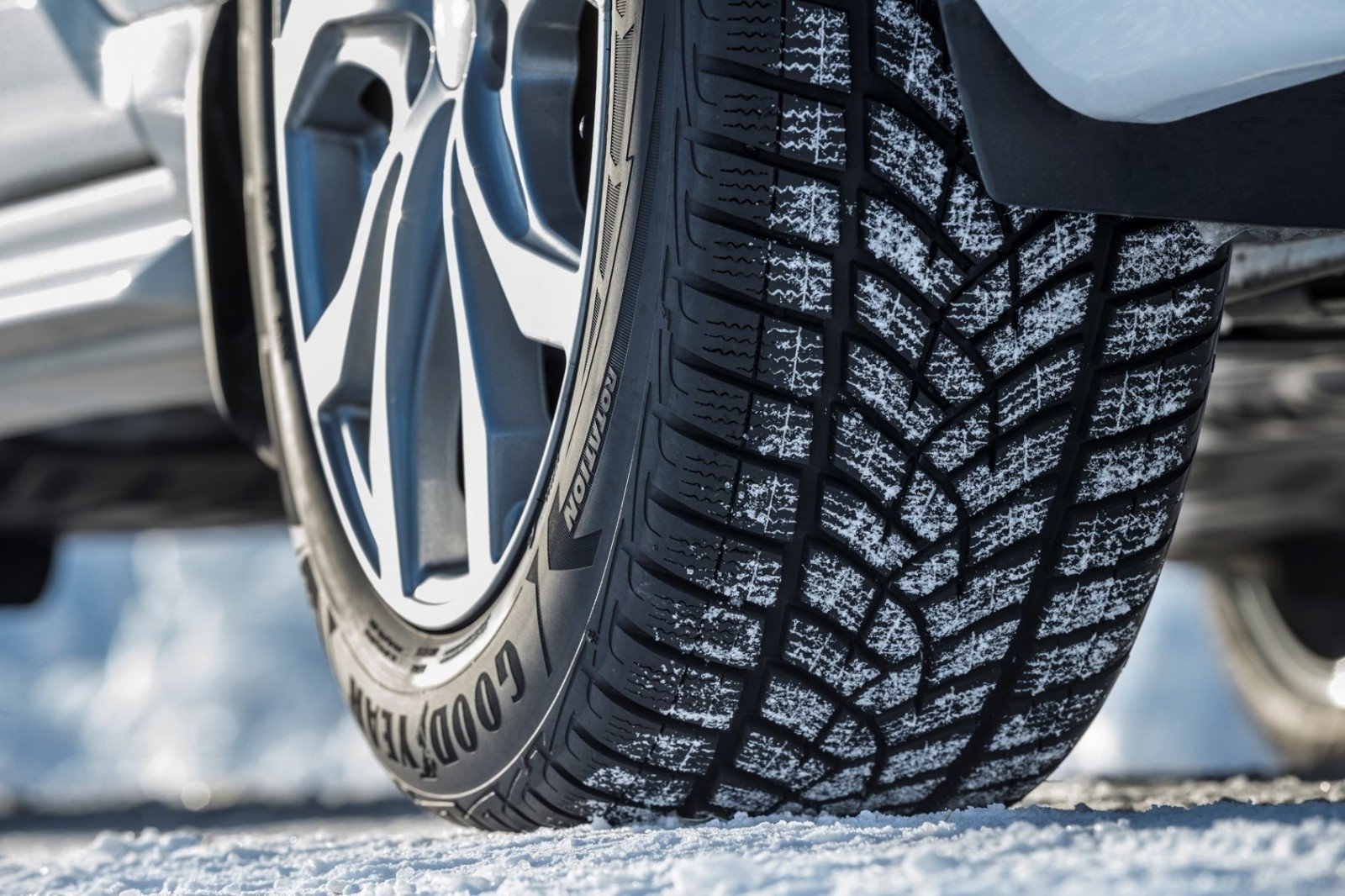 Traction is the key to good movement, turning, and stopping on wet surfaces. Good tire tread allows water to escape from under the tires, preventing loss of traction. Consider changing to tires designed for increased traction on wet surfaces. Make sure tires are properly inflated to the pressure shown in the owner’s manual or on the door frame.
Traction is the key to good movement, turning, and stopping on wet surfaces. Good tire tread allows water to escape from under the tires, preventing loss of traction. Consider changing to tires designed for increased traction on wet surfaces. Make sure tires are properly inflated to the pressure shown in the owner’s manual or on the door frame.Windshield Wipers & Washer
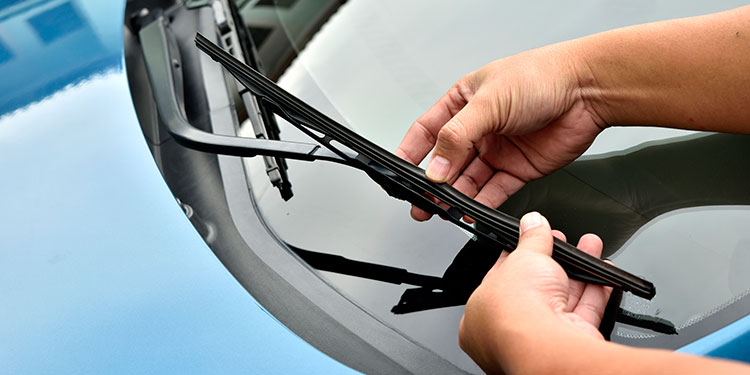 Are wipers functioning properly? Blades that streak should be replaced. Fill the washer reservoir bottle with a washer solvent.
Are wipers functioning properly? Blades that streak should be replaced. Fill the washer reservoir bottle with a washer solvent.
Safe Driving Emergency Kit
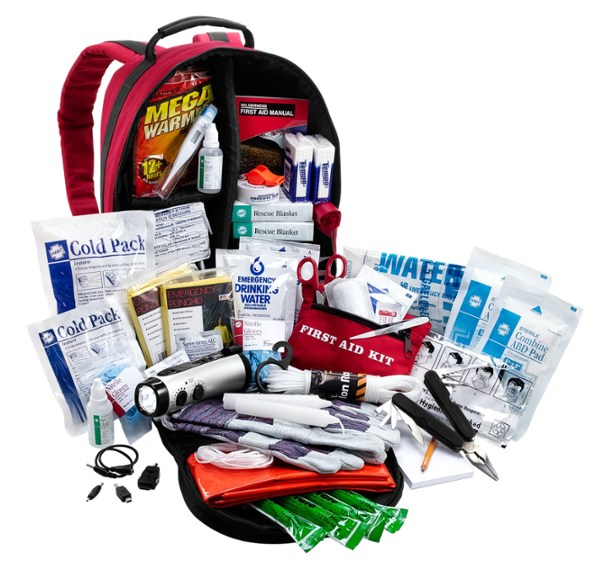 Keep these items in your vehicle in case of emergency:
Keep these items in your vehicle in case of emergency:
- Flashlight.
- Mats that can be placed under tires to increase traction.
- Small bag of sand, salt, or kitty litter to spread around tires to increase traction.
- Shovel.
- Cloth or roll of paper towels.
- Blanket.
- Booster cables.
- Window-washing solvent to keep the reservoir filled and windshields clean.
- Warning devices – flares or triangles.
- Cellular phone.
Safe Driving In The Driver’s Seat
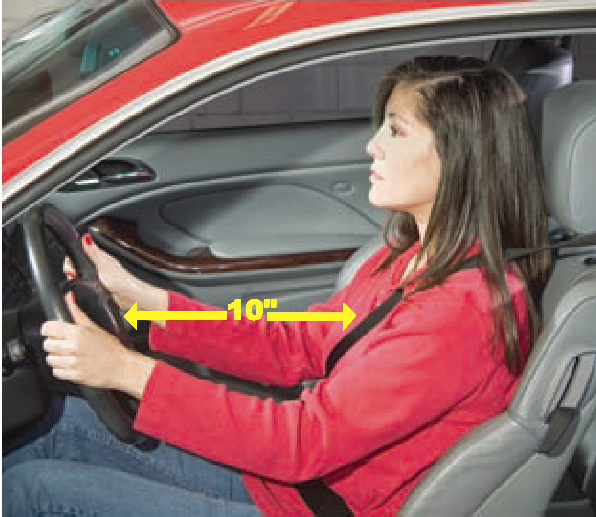 Correct seat adjustment puts you in a position to perform the gentle smooth, precise movements necessary for safe motoring in inclement weather. Adjust your seat so you sit no closer than 10 inches from the steering wheel and so that you can see the road ahead. You should sit close enough to the steering wheel to maintain a bend in your elbows. This position will reduce the chance of injury to your fingers, hands, and forearms if the airbag deploys. Shorter drivers may need a wedge cushion or pedal extensions to be able to sit this distance from the steering wheel. Confirm the position of mirrors and environmental controls before you start the vehicle. Don’t forget to buckle up, and have all your passengers buckle up, too.
Correct seat adjustment puts you in a position to perform the gentle smooth, precise movements necessary for safe motoring in inclement weather. Adjust your seat so you sit no closer than 10 inches from the steering wheel and so that you can see the road ahead. You should sit close enough to the steering wheel to maintain a bend in your elbows. This position will reduce the chance of injury to your fingers, hands, and forearms if the airbag deploys. Shorter drivers may need a wedge cushion or pedal extensions to be able to sit this distance from the steering wheel. Confirm the position of mirrors and environmental controls before you start the vehicle. Don’t forget to buckle up, and have all your passengers buckle up, too.
Suit up
Select clothing that provides comfort and freedom of movement behind the wheel. While heavy garments may be necessary outside the vehicle, they can restrict movement behind the wheel. Always come to a complete stop in a safe spot before removing a coat or gloves.Safe Driving When Visibility Is Poor
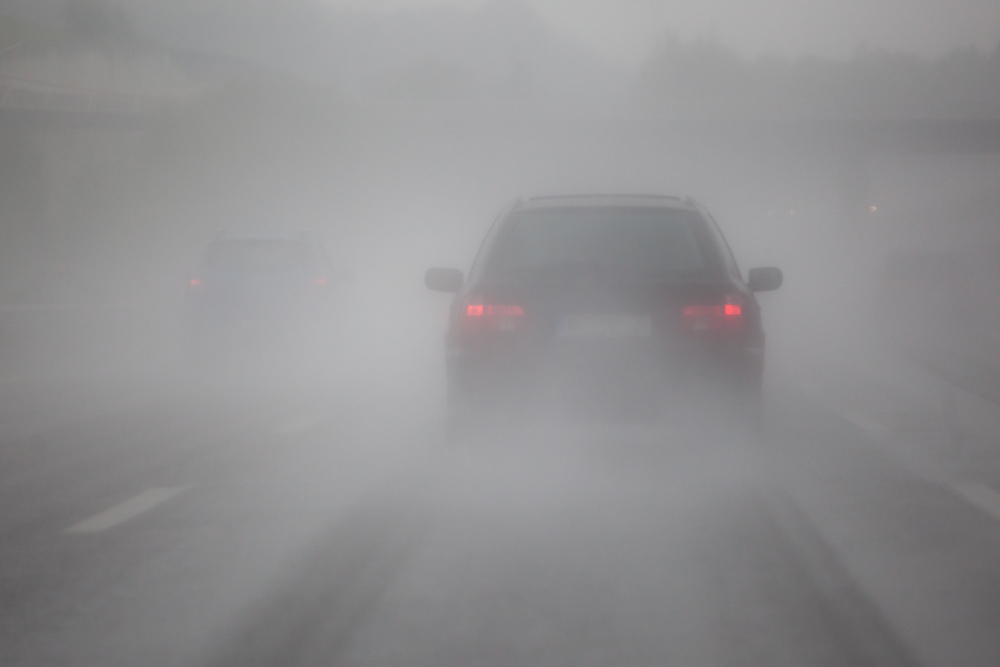 Regardless of your driving experience, the odds are greater that you’ll have a collision in wet weather. Hard rain can limit visibility so that you can’t see the edges of the road, traffic signs, or other vehicles on the road. If you must drive under such conditions, it’s helpful to have the knowledge and skills to cope with this challenge.
Regardless of your driving experience, the odds are greater that you’ll have a collision in wet weather. Hard rain can limit visibility so that you can’t see the edges of the road, traffic signs, or other vehicles on the road. If you must drive under such conditions, it’s helpful to have the knowledge and skills to cope with this challenge.
A Clear View
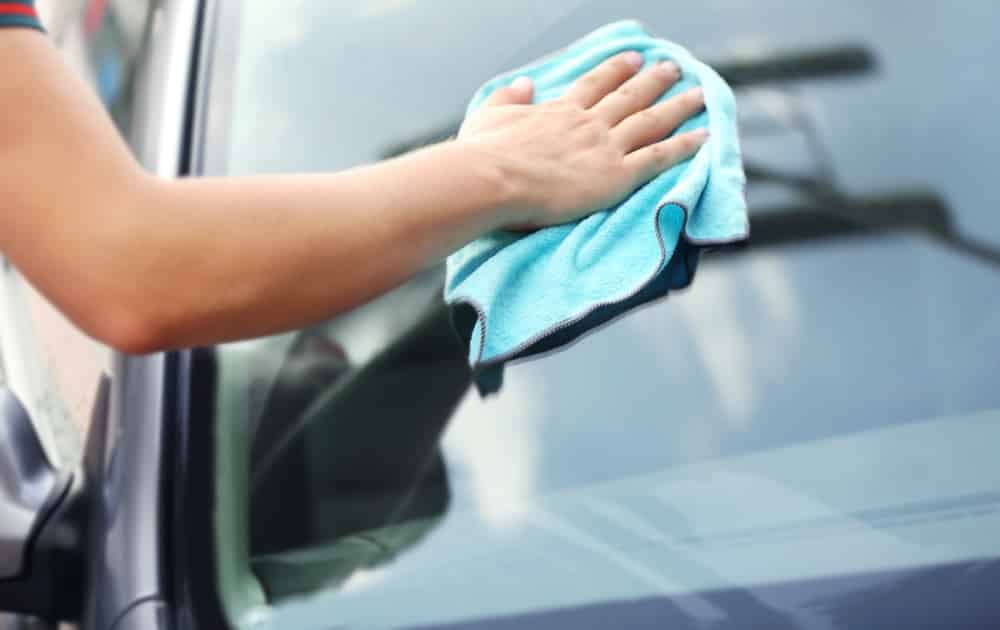 Keep your windshield and windows clean. It’s important to clean the inside of your windows at least once a week – more often if you smoke. Use your defroster to keep front and rear windshields clear. On a cold day, move the heat control to “hot” and let the engine warm-up before you turn on the defrosters and blowers. This will prevent moisture from collecting on the inside of the glass. If the glass gets foggy, open a window slightly and turn the defroster fan to a higher speed. Use your air conditioner to reduce humidity.
Keep your windshield and windows clean. It’s important to clean the inside of your windows at least once a week – more often if you smoke. Use your defroster to keep front and rear windshields clear. On a cold day, move the heat control to “hot” and let the engine warm-up before you turn on the defrosters and blowers. This will prevent moisture from collecting on the inside of the glass. If the glass gets foggy, open a window slightly and turn the defroster fan to a higher speed. Use your air conditioner to reduce humidity.
Safe Driving Getting Out Of A Tough Spot
- You need steady pulling and moderate power when traction is poor. The best remedy when wheels are stuck in the mud or a soft shoulder is to apply power slowly.
- Keep the wheels pointed straight ahead so the vehicle can move in a straight line. If you can’t go forward, try backing out, steering in the vehicle’s tracks.
- With a manual transmission, start in second gear to prevent wheel spin. Accelerate carefully, giving enough fuel to prevent the engine from stalling, and ease along gradually until traction improves.
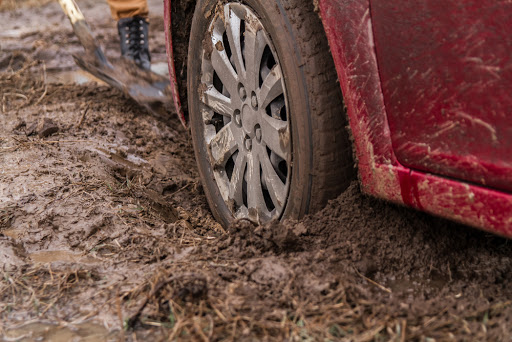 Rock your way out by using second gear in manual transmission and low gear in automatic transmissions. Check your owner’s manual for recommended procedures. Move forward until the vehicle stops, then shift into reverse and move backward until momentum stops. Repeat this process, moving ahead a little more each time. Use minimum power to keep the wheels from spinning and digging in deeper.
Rock your way out by using second gear in manual transmission and low gear in automatic transmissions. Check your owner’s manual for recommended procedures. Move forward until the vehicle stops, then shift into reverse and move backward until momentum stops. Repeat this process, moving ahead a little more each time. Use minimum power to keep the wheels from spinning and digging in deeper.
- If rocking doesn’t work and wheels simply spin, find a way to create traction. Traction mats, gravel, or kitty litter work best, but you can also use salt, burlap, branches or even the vehicle’s floor mats. Shovel a space in front of the drive wheels and spread your materials there. Apply power slowly, using second or low gear.

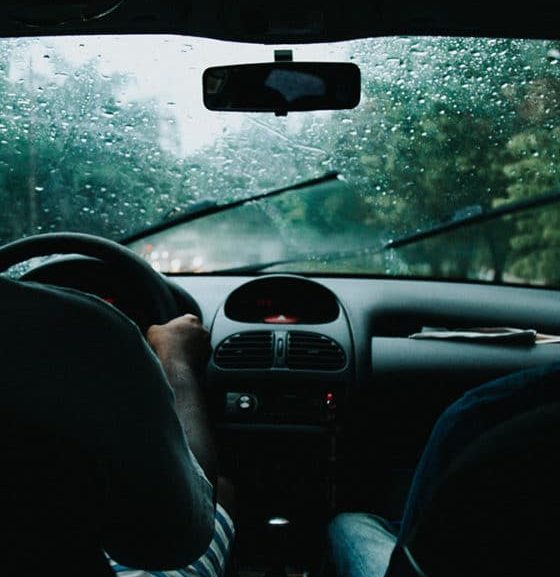












This blog Safe Driving Wet-Weather Driving Techniques helps me a lot with my battery
problems. I use a simple solutio for my battery from
here: https://s96.me/battery-reconditioning (or clik on name)
😉 Kiss you all!
[…] you’ve got summer tyres, then you definitely have wet weather tyres, too. You might think that these will be constructed of harder rubber compounds than those […]
[…] of all total collisions that occur during the hours of darkness. By learning how to drive far more safely when it is night time, we are therefore reducing our chances of being involved in a collision by a […]
[…] access them from the backside of the headlamp or tail lamp assembly. You may need to remove a few screws that hold the assembly in a bracket or to the body of the […]
[…] car. Deep Cycle Deep cycle batteries provide power over a longer period of time. They’re used for other vehicles in addition to cars, like golf carts or marine vehicles. Lithium-Ion This type of battery […]
[…] automobiles to prevent slip and locking of the wheel after brakes applied. It is an automobile safety system, the controller is provided to control the necessary torque to maintain optimum slip ration. The […]
[…] the angle of your steering axis when viewed from the side of your vehicle. If you have a positive caster, the steering axis will tilt toward the driver. A negative caster, on the other hand, means the […]
[…] is colored red-yellow, and green it is important to know what to do when each color appears to stay safe on the […]
[…] quality of local cars is down. Because we are very slow and down to produced cars according to the market demand. In our daily life vehicle is very important just because of this the demand for the vehicle […]
[…] & outsides. If the windows get foggy, turn on the air conditioning and it will remove the fog. Seeing well is the key to the better driving right? Makes […]
[…] or bumps felt on the road since these forces that are supposed to be absorbed by the tires are generally transmitted into the beam suspension parts. This, in turn, creates movement in the parts […]